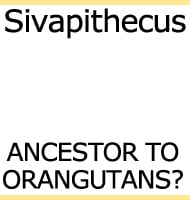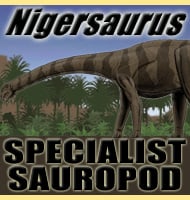In Depth
By the start of the Late Cretaceous the central portion of North America had been submerged by a shallow sea. This created two landmasses out of the North American continent, Laramidia in the west and Appalachia in the east. Most Cretaceous era dinosaurs from North America have been found in what was once Laramidia, but a few are known from Appalachia. With respect to the hadrosaurs (a.k.a. the duck billed dinosaurs), for over one hundred and fifty years the only known member of this group of dinosaurs present in Appalachia was the Hadrosaurus genus itself (discovered in New Jersey in 1858). Then in 2016, a second genus of hadrosaur was identified as living in Appalachia: Eotrachodon.
Eotrachodon is so far known from an almost complete skull, lower jaws as well as some vertebrae and fragmentary elements of the limbs. The genus is actually the first hadrosaurid dinosaur from Appalachia to be known from skull material, with the earlier named Hadrosaurus only known from very partial post cranial fossils. Eotrachodon was discovered in the Mooreville Chalk Formation of Alabama, a fossil bearing formation that is actually best known for marine animals such as sharks, bony fish and mosasaurs. This may well suggest that the holotype individual of Eotrachodon was actually washed out to sea, which in turn might mean that this animal lived elsewhere from Alabama.
Eotrachodon means ‘dawn rough tooth’ and is a reference to the earlier appearance of Eotrachodon compared to the genus Trachodon (today regarded as a highly dubious hadrosaurid dinosaur genus). The authors of the description have speculated that Eotrachodon may have been amongst the first true hadrosaurs to appear upon the face of the planet, suggesting that the hadrosaurid dinosaurs may have first appeared in Appalachia. However, with a growing number of hadrosauroid dinosaurs (evolutionary close to true hadrosaurs, though not quite them) being discovered in other parts of America, Asia as well as possibly Africa, it may well be too soon to jump to a conclusion as to where the first true hadrosaurs appeared.
Further Reading
- A primitive hadrosaurid from southeastern North America and the origin and early evolution of ‘duck-billed’ dinosaurs. - Journal of Vertebrate Paleontology: e1054495. - Albert Prieto-Marquez, Gregory M. Erickson& Jun A. Ebersole - 2016.









